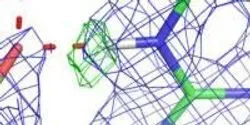atoms

Collective, fast diffusion observed by Ames Laboratory team could represent a new way to grow perfect, tiny metal nanostructures.

Enzymes are catalysts that speed up chemical reactions in living organisms and control many cellular biological processes by converting a molecule, or substrate, into a product used by the cell. For scientists, understanding details of how enzymes work is essential to the discovery of drugs to cure diseases and treat disorders.

Sparks literally fly when a sperm and an egg hit it off. The fertilized mammalian egg releases from its surface billions of zinc atoms in “zinc sparks,” one wave after another, found a Northwestern University-led interdisciplinary research team that includes experts from the U.S. Department of Energy’s Advanced Photon Source at Argonne National Laboratory.

The ability to locate and count small numbers of impurity atoms could lead to advances in modern electronics and optical fiber communication networks.











